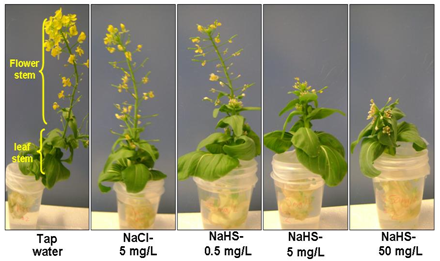Hydrogen Sulfide Inhibits Flowering but Hastens New Leaf Growth in Bok Choy (Chinese Cabbage)
(1) Sir Winston Churchill Collegiate and Vocational Institute, Thunder Bay, Canada, (2) Cardiovascular and Metabolic Research Unit, Lakehead University, Thunder Bay, Canada
https://doi.org/10.59720/15-011
Hydrogen sulfide (H2S) is a colorless, toxic, and flammable gas with the smell of rotten eggs. High concentrations of H2S are toxic, but a very small amount of H2S can help plants and our bodies in many ways. The unexpected flowering (bolting) of leafy greens inhibits leaf growth and reduces the leaf quality, and the effect of H2S on plant bolting is still unknown. Here we investigated the effects of H2S on flowering and leaf growth by using the hearts of bok choy (Brassica rapa subsp. Chinensis), a type of Chinese cabbage. Incubation of bok choy hearts for 16 days in a solution of sodium hydrosulfide (NaHS), a H2S donor, significantly repressed bok choy flowering and shortened flower stems. In contrast, the flowering of bok choy in the tap water and sodium chloride (NaCl) groups was normal, with longer flower stems and many flowers. NaHS had no effect on the growth of leaf stems or on leaf chlorophyll contents. In addition, NaHS significantly reduced pollen viability but induced the growth of new leaves from the bottom part of bok choy hearts, in comparison with the two control groups, tap water and NaCl. These observations indicate that H2S inhibits flowering but hastens new leaf growth in bok choy. Not only can this discovery help grow green vegetables, but it can also potentially help control weeds.
This article has been tagged with: